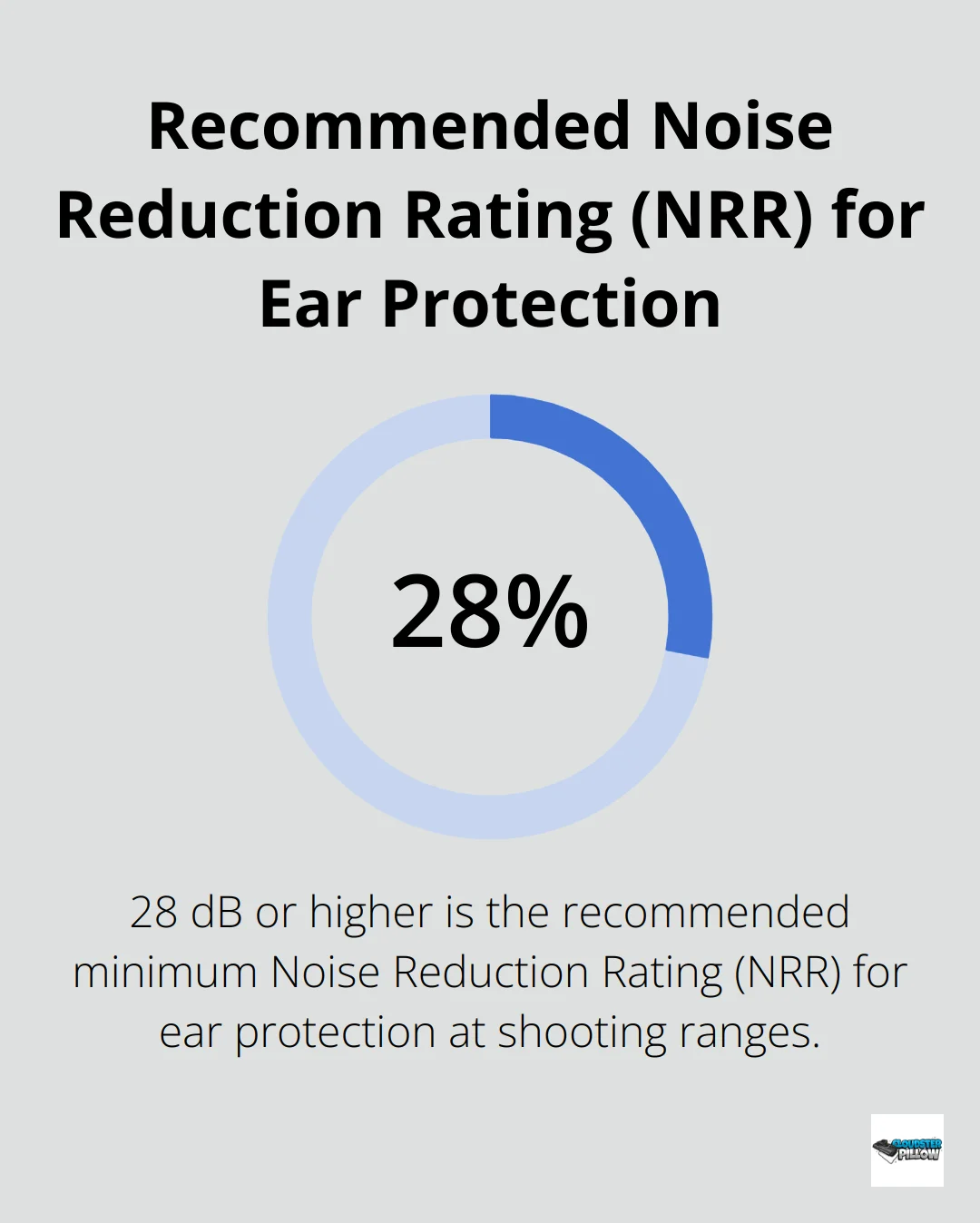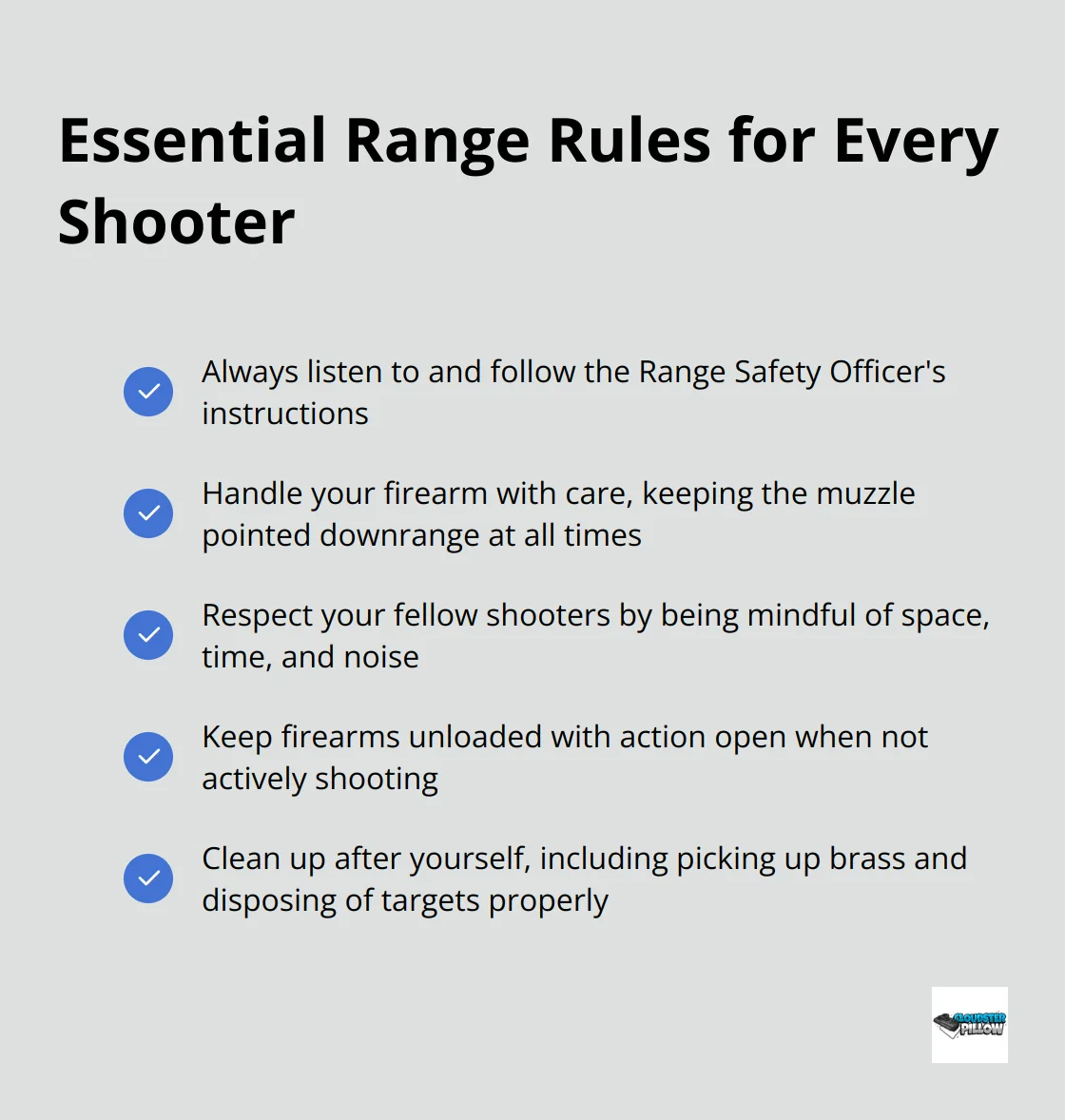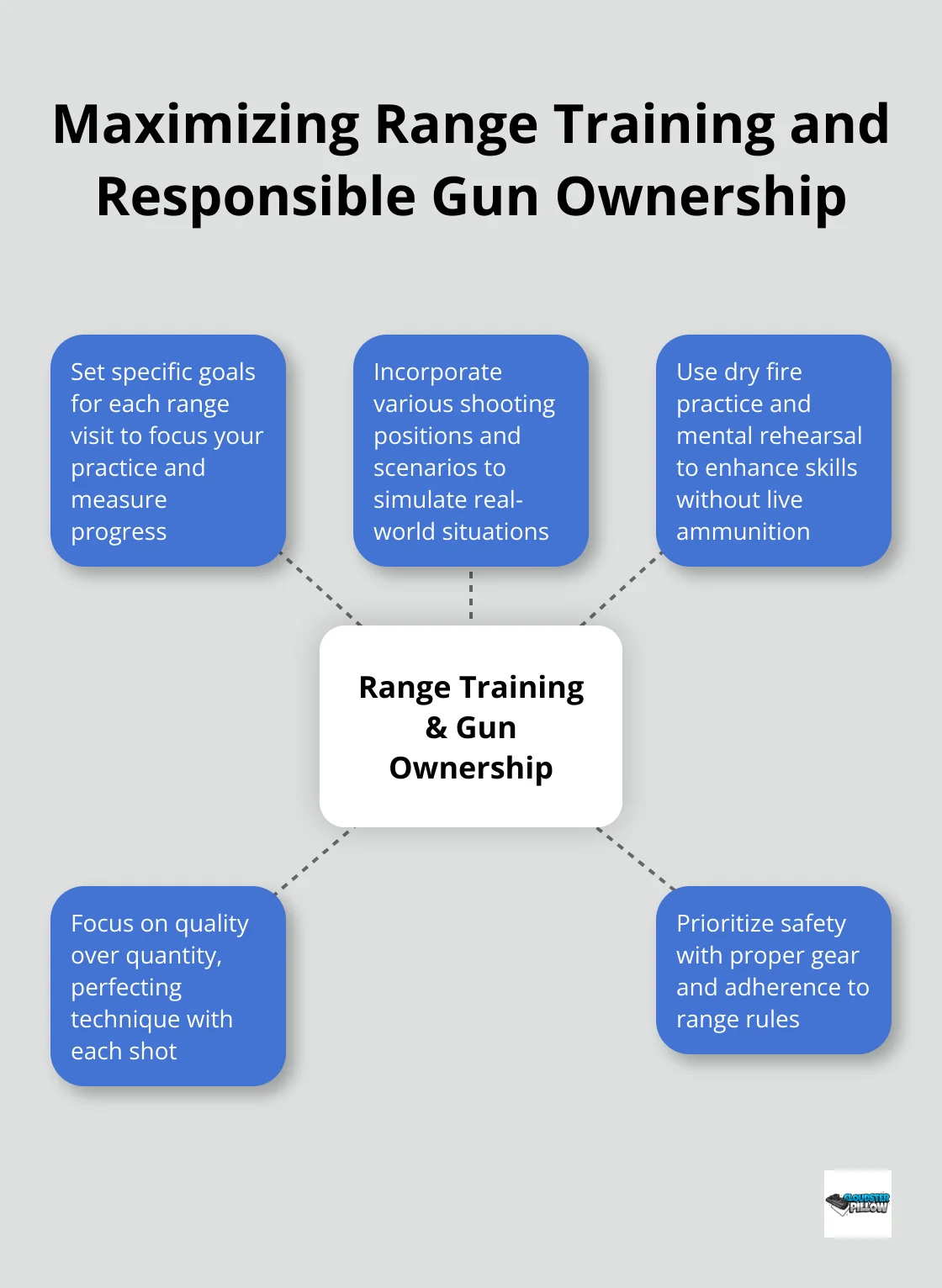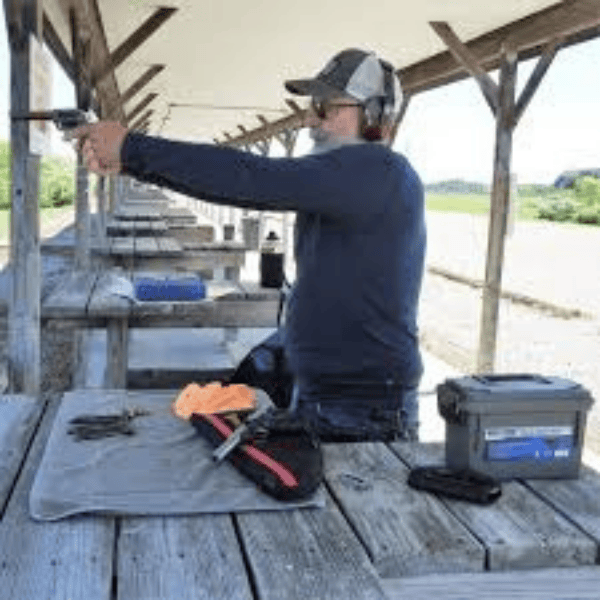Shooting Range
How to Have a Safe and Productive Day at the Shooting Range
At Cloudster Pillow, we understand the importance of a safe and productive day at the shooting range.
Whether you’re a beginner or an experienced shooter, proper preparation and knowledge are key to making the most of your range time.
This guide will cover essential safety gear, range etiquette, and tips to maximize your training session at the shooting range.
What Safety Gear Do You Need at the Range?
Safety gear is as important as your firearm when you visit the shooting range. The right equipment ensures your protection and enhances your shooting experience.
Eye and Ear Protection: Your First Line of Defense
Your eyes and ears need top-notch protection. Always wear impact-resistant shooting glasses that meet ANSI Z87.1 standards. For ear protection, choose earmuffs with a Noise Reduction Rating (NRR) of 28 dB or higher. Electronic earmuffs are an excellent choice (they allow you to hear range commands while blocking harmful noise levels).

Dress Code: Safety Meets Comfort
Closed-toe shoes with good traction prevent slips and protect your feet from hot brass. Long pants and a collared shirt offer additional protection. Avoid low-cut tops to prevent hot brass from getting trapped against your skin. If you use a holster wedge (like the Cloudster Pillow), ensure your clothing allows for a smooth draw without snagging.
First Aid and Emergency Information: Be Prepared
Pack a compact first aid kit tailored for potential range injuries. Include items like gauze, bandages, antiseptic wipes, and a tourniquet. Keep emergency contact information readily accessible. Write it on a card in your range bag or save it as ICE (In Case of Emergency) in your phone.
Additional Safety Accessories
Consider bringing a cleaning kit for your firearm. A small towel or rag can be useful for wiping down your hands or equipment. Some shooters also prefer to bring their own targets and staple gun for convenience.
Safety at the range is everyone’s responsibility. The right equipment and mindset set a positive example for other shooters. Now that you’re geared up properly, let’s move on to range etiquette and best practices to ensure a smooth and safe shooting experience.
Range Rules Every Shooter Must Follow
At the shooting range, safety and respect take precedence. Proper etiquette ensures a positive experience for all. Here’s what you need to know to become a responsible range user.

Listen to the Range Safety Officer
The Range Safety Officer (RSO) is your ultimate authority figure. Their instructions are non-negotiable. When they call “cease fire,” stop shooting immediately and step away from your firearm.
Inform the RSO if you’re new to the range or unfamiliar with a particular firearm. They’re there to help, not judge. If you’re unsure about anything, ask. It’s better to clarify than to make a potentially dangerous mistake.
Handle Your Firearm with Care
Treat every gun as if it’s loaded, even when you know it’s not. Keep the muzzle pointed downrange at all times.
When you’re not actively shooting, keep your firearm unloaded with the action open. Use a chamber flag if available. This visual indicator lets others know your gun is safe.
If you’re using a concealed carry holster, practice your draw stroke carefully. Ensure your finger stays off the trigger until you’re ready to shoot.
Respect Your Fellow Shooters
Shooting ranges can get busy, especially on weekends. Be mindful of others’ space and time. Don’t monopolize a lane if others are waiting. Most ranges have a one-hour limit when it’s busy.
Avoid distracting other shooters. Keep conversations to a minimum and at a reasonable volume. If you need to make a call, step away from the firing line.
Clean up after yourself. Pick up your brass, dispose of targets properly, and leave your area tidy. Many ranges offer a discount if you police your brass, saving you money on your next visit.
We’re all here to improve our skills and enjoy the sport. A little courtesy goes a long way in creating a positive atmosphere for everyone at the range.
Now that you understand the basic rules and etiquette, let’s explore how to maximize your training session and get the most out of your range time.
How to Maximize Your Range Training
Set Specific Goals for Each Visit
Before you head to the range, decide what you want to achieve. Do you want to work on your draw speed? Improve accuracy at different distances? Practice malfunction drills? A clear objective keeps you focused and helps measure progress.
For example, you might set a goal to draw and fire two accurate shots on target in under 2 seconds from concealment. Start with a realistic baseline and work to improve your time gradually.
Mix Up Your Shooting Positions
Don’t just stand and shoot. Incorporate different positions to simulate real-world scenarios. Practice shooting from kneeling, prone, and around barricades (if your range allows it). If you train for self-defense, add movement to your drills. Take a step to the side before firing or practice shooting while moving backwards.
The FBI qualification course provides an excellent benchmark for varied position shooting. It includes shots from 3 to 25 yards, uses both strong and support hand, and incorporates time pressure.
Dry Fire and Mental Rehearsal
Make the most of your live fire time by incorporating dry fire practice. Before you load live ammunition, run through your drills with an empty gun. This reinforces proper grip, sight alignment, and trigger control without the cost of ammo.
Mental rehearsal plays an equally important role. Visualize successful executions of your drills. Picture yourself drawing smoothly, acquiring your sights quickly, and breaking clean shots. This mental practice enhances muscle memory and builds confidence.
Focus on Quality Over Quantity
It’s better to fire 50 well-aimed shots with purpose than to blast through 200 rounds aimlessly. Focus on perfecting your technique and analyzing each shot. If you’re not sure why you missed, don’t hesitate to ask the RSO or a more experienced shooter for advice.
Utilize Training Tools and Resources
Try to incorporate training tools to enhance your practice. Shot timers can add pressure and help you track improvements. Consider using targets that require decision-making skills, such as “shoot/no-shoot” scenarios. These tools add variety and challenge to your range sessions, keeping your training engaging and productive.
For home defenders, monthly range visits can significantly improve your skills and confidence. Regular practice with your chosen firearm ensures you’re prepared for any situation that may arise.
FAQs
What safety gear do I need at the shooting range?
To stay safe at the range, you’ll need eye and ear protection, comfortable clothing, and a first aid kit. Impact-resistant shooting glasses and earmuffs with a Noise Reduction Rating (NRR) of 28 dB or higher are essential. Additionally, closed-toe shoes and long pants provide protection from hot brass, and a first aid kit should be on hand in case of emergencies.
What are the key range rules every shooter must follow?
Key range rules include listening to the Range Safety Officer (RSO), handling firearms with care, and respecting fellow shooters. Always keep the muzzle pointed downrange, keep your firearm unloaded when not in use, and respect personal space. Be mindful of the range’s time limits, clean up your area, and help maintain a safe and respectful environment.
How can I maximize my training at the shooting range?
To maximize your range time, set specific goals for each visit, such as improving accuracy or draw speed. Mix up your shooting positions and add movement to simulate real-world situations. Dry fire practice and mental rehearsal are crucial for reinforcing muscle memory, and focusing on quality over quantity ensures you’re honing your technique with purpose.
Why is dry fire practice important for range training?
Dry fire practice helps reinforce proper grip, sight alignment, and trigger control without using live ammunition. It enables you to improve your technique and muscle memory in a safe environment, making the most of your live-fire training sessions. Mental rehearsal also boosts confidence and prepares you for real-life scenarios.
What tools and resources should I use to enhance my shooting practice?
Shot timers, decision-making targets, and drills such as “shoot/no-shoot” scenarios can add variety and challenge to your training. These tools help you track your progress, simulate real-world situations, and make your range time more engaging and productive.
Final Thoughts
A day at the shooting range offers more than target practice. It provides an opportunity to improve skills, build confidence, and promote responsible firearm ownership. Safety takes precedence at the range. Proper eye and ear protection, adherence to range rules, and respect for the Range Safety Officer’s instructions create a secure environment for all shooters.

Continuous learning and practice lead to proficiency and responsibility. Clear goals, varied shooting positions, and self-challenges enhance range sessions. Dry fire practice and mental preparation complement live fire training. These techniques help shooters maximize their time and resources at the range.
Responsible gun ownership extends beyond the shooting range. It encompasses ongoing education and secure storage at home. The Cloudster Pillow can enhance comfort and concealment for those who carry concealed (particularly with inside-the-waistband or appendix holsters). Regular practice reinforces safe handling habits and maintains essential skills for all firearm owners.


Pingback: The Best Gun Cleaning Kit for Every Firearm Owner - Cloudster Pillow
Pingback: How to Become a Firearms Instructor [Step-by-Step Guide] - Cloudster Pillow
Pingback: How to Safely Dry Fire Practice at Home - Cloudster Pillow